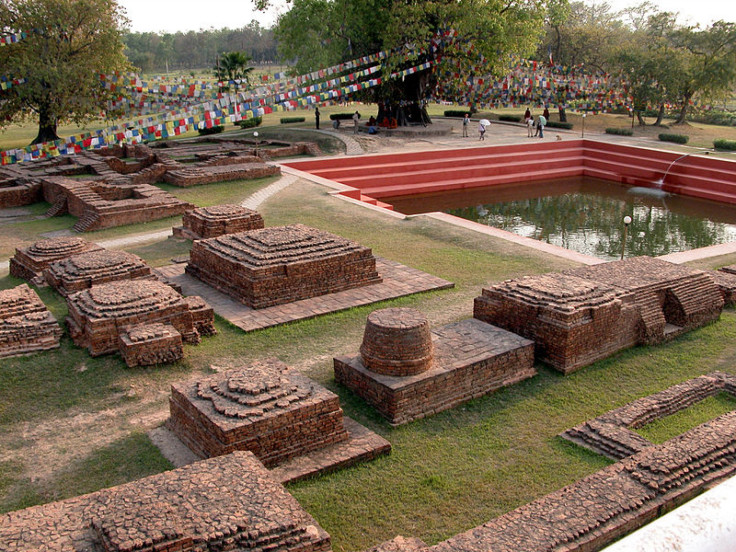Buddhist Shrine Found In Nepal Is ‘Earliest In The World,’ Reveals New Birthday Of Buddha

An ancient Buddhist shrine found in Nepal opens a new window into the life of Siddhartha Gautama, more famously known as the Buddha. According to National Geographic, archaeologists have recently discovered what they’re calling the “earliest Buddhist shrine in the world.” The small wooden shrine, located underneath the revered Maya Devi temple at Nepal’s Lumbini pilgrimage site, dates back to the sixth century B.C., meaning Buddha’s birth was about a century earlier than scholars previously believed.
The exact date of Buddha’s birth has long been disputed. Tradition dictates that the Himalayan sage was born right around the turn of the 5th century B.C., while Nepalese authorities hold that Buddha was born roughly 223 years earlier.
"Very little is known about the life of the Buddha, except through textual sources and oral tradition," Robin Coningham of Durham University, U.K., who co-led the archaeological dig, said in a press conference Monday, according to NBC News. "For the first time we actually have scientific evidence leading to the establishment of one of the major Buddhists shrines.”
Lumbini is visited by hundreds of thousands of Buddhist pilgrims every year. It is one of the foremost locations linked to Buddha’s life. Working alongside nuns, pilgrims and meditating monks, Coningham and a team of archaeologists excavated the Maya Devi temple, which is regarded as the site where Buddha’s mother took hold of a tree and gave birth to the Buddha more than 2,000 years ago.
Digging under a series of brick temples, the archaeologists unearthed a wooden structure underneath the walls of the later brick Buddhist shrine. According to Discovery News, the team found postholes that would have supported a wooden railing surrounding the shrine’s center. The ancient Buddhist shrine had no roof and contained mineralized tree roots, consistent with an ancient bodhigara, or tree shrine. It also appears as if the tree that once stood there had been fertilized.
Radiocarbon dating of charcoal from the wooden postholes allowed the team to zero in on the shrine’s age. They found that the ancient Buddhist shrine dated to around 550 B.C. National Geographic reported that the archaeologists also used a technique called luminescence dating, a process that uses optical stimulation to reveal radioactive decay times of soil elements to give archaeologists an idea of when the soil was last on the surface.
"The sequence [of archaeological remains] at Lumbini is a microcosm for the development of Buddhism from a localized cult to a global religion," the authors wrote in their report, published in the December issue of the journal in Antiquity.
“By placing the life of the Gautama Buddha firmly into the sixth century B.C. we can understand the exact character of the social and economic context in which he taught -- it was a time of dramatic change with the introduction of coinage, the concept of the state, urbanization, the growth of merchants and the middle classes,” Coningham told Discovery News.
"These discoveries are very important to better understand the birthplace of the Buddha," Ram Kumar Shrestha, Nepal's minister of culture, tourism and civil aviation, said in a statement issued Monday. "The government of Nepal will spare no effort to preserve this significant site."
But the discovery of a nearly 2,600-year-old Buddhist shrine doesn’t come without its skeptics. While many archaeologists praise the discovery as a true milestone in the study of ancient Buddhism, others caution not to jump to conclusions about its antiquity just yet.
"The worship of trees, often at simple altars, was an ubiquitous feature of ancient Indian religions,” Julia Shaw, a lecturer in South Asian archaeology at University College London, told National Geographic. “It is also possible that what is being described represents an older tree shrine quite disconnected from the worship of the historical Buddha.”
© Copyright IBTimes 2024. All rights reserved.






















